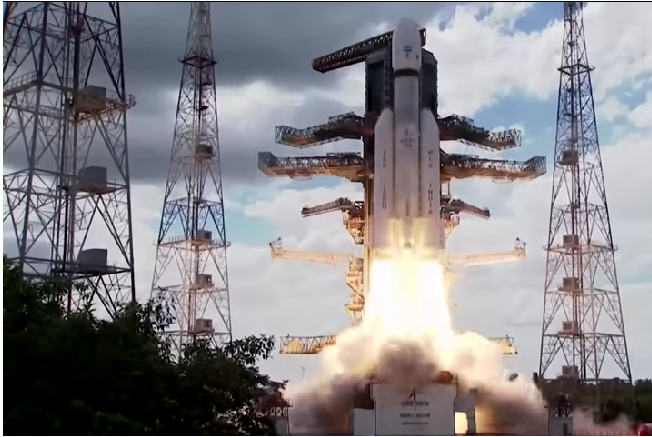
Newsnomics AJAY ANGELINA reporter |
India has launched its third moon mission in the bid to become the fourth country to execute a controlled landing on the surface of moon following the United States, Russia and China.
India’s successful launch of space craft named Chandrayaan-3, means “moon vehicle” in Sanskrit, blasted off from the Satish Dhawan Space Center at Sriharikota in southern Andhra Pradesh state at just after 2:30 p.m.
local time (5 a.m. ET) on July 14, 2023.
National crowd was gathered at the space center to watch the India’s historical launch cheering with shouts and joy. There were roars of "Bharat Mata ki jai [Victory to mother India]" from every corner of the hall reported by Arunoday Mukharji, BBC’s reporter.
More than 1 million people joined YouTube to watch the successful launch of the space craft.
Later on, Friday, the Indian Space Research Organization confirmed on the twitter that Chandrayaan-3 is in “precise orbit” and has “begun its journey to the moon with normal health.”
Indian Prime Minister, Narendra Modi also tweeted, “Chandrayaan-3 scripts a new chapter in India’s space odyssey. It soars high, elevating the dreams and ambitions of every Indian. This momentous achievement is a testament to our scientists’ relentless dedication. I salute their spirit and ingenuity!”
“Congratulations India. Chandrayaan-3 has started its journey towards the moon,” said Sreedhara Panicker Somanath, the director of ISRO, the India’s Space Research Organization director, shortly after the launch.
Chandrayaan 3, a lander and a rover, weighs 3,900kg and cost 6.1bn rupees ($75m; £58m), in a demonstration of India’s emerging space technology will embark on a journey lasting slightly over a month before landing on the moon’s surface later in August. It aims to safely land on the lunar surface, collect data and conduct a series of scientific experiments to learn more about the moon’s composition.
Sumanthiran, ISRO director adds data from Chandrayaan-2 crash has been "collected and analysed" and it has helped fix all the errors in the latest mission.
Chandrayaan 3 is the transformation of India’s last orbital mission Chandrayaan-2 in 2019, whose orbiter continues to circle and study the Moon even today, but its lander-rover failed to make a soft landing and crashed during touchdown.
India’s first lunar probe, the Chandrayaan-1, orbited the moon and was then deliberately crash-landed onto the lunar surface in 2008.
India's Chandrayaan-1 played a crucial role in the discovery of water molecules on the Moon.










